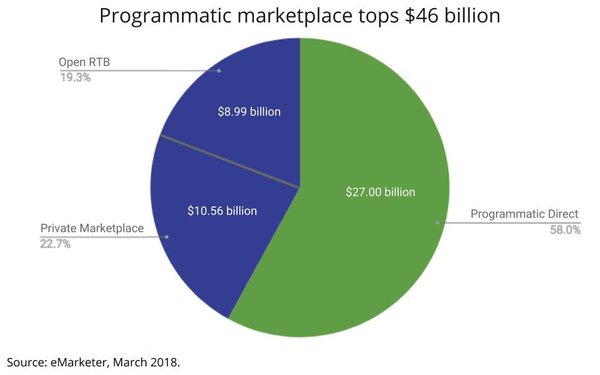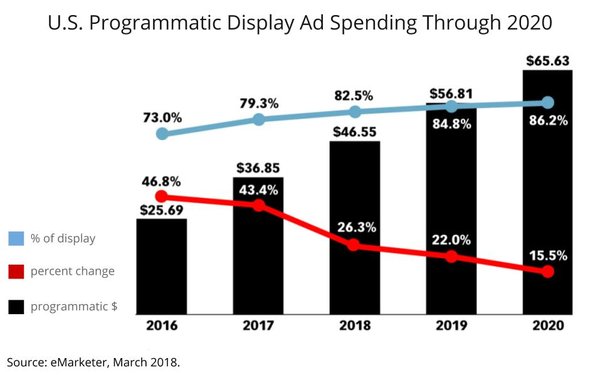
From its early roots as a largely open bidding
marketplace, the U.S. programmatic display ad marketplace has blossomed into a $46.55 billion arena comprised mostly of direct and/or "private" deals enabled by programmatic trading technology.
Those are the top lines of eMarketer's revised U.S. programmatic display advertising estimates and forecast, which show that so-called open RTB -- or auction-based real-time bidding -- now
comprises less than a quarter of the total programmatic display advertising marketplace. Presumably, much of that goes to the "long-tail": smaller marketers and platforms optimizing, leveraging and
"mopping up" display ad inventory not optimized by the more direct and controllable programmatic markets.
The eMarketer analysis shows two important patterns. One is that the programmatic
marketplace has exploded as automation technology replaces human haggling in processing digital display advertising inventory.
advertisement
advertisement
The other, that the supply and demand sides of the business are
largely negotiating the parameters of their programmatic deal-making before it hits the machines, either via "programmatic direct" -- the lion's share of all programmatic trading -- or via "private"
markets that enable media traders and advertisers to leverage programmatic technology to structure real-time buys based on their pre-negotiated terms and criteria.
Perhaps the most remarkable
insight to be gleaned from eMarketer's analysis is how small the actual "human" direct portion of the digital display ad marketplace has become. Just 17.5% of the digital display market is bought and
sold directly through people. Presumably, those are the highest value deals, often involving creative, content and packaging that cannot be processed via programmatic technology.
“Significant momentum behind programmatic ad buying now focuses on its rich audience targeting capabilities,” eMarketer principal analyst Lauren Fisher says of the report's findings.
“Buyers have come to rely on programmatic as the primary way to infuse their ad campaigns with first-, second- or third-party data insights.”
